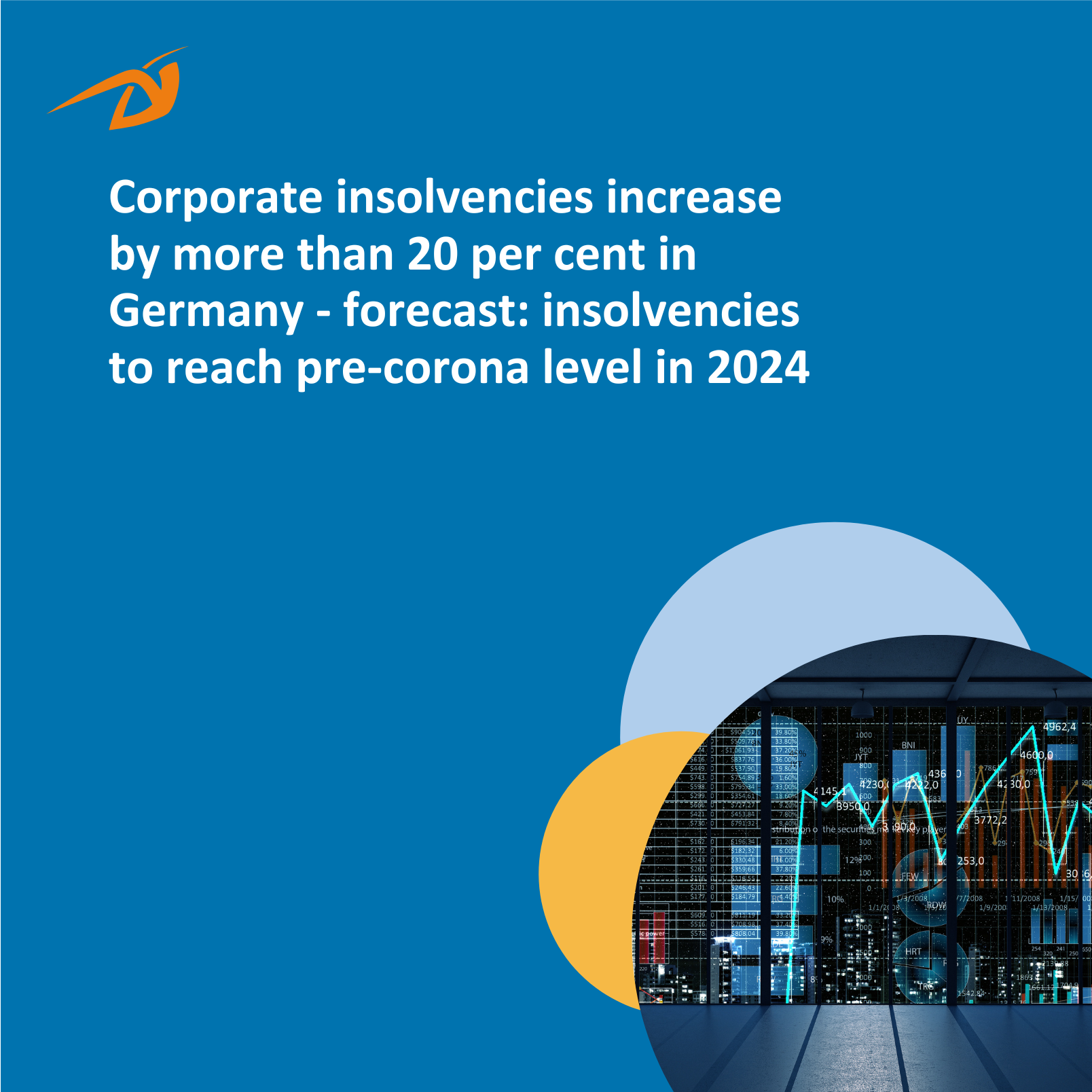-
COOPERATION BETWEEN CRIF AND THE MITTELSTANDSVERBUND - ZGV E.V.: FACILITATING SUSTAINABILITY REPORTING FOR SMES
Read MoreDER MITTELSTANDSVERBUND - ZGV e.V. and the information service provider CRIF announced a strategic partnership on 23 August that...
-
Corporate insolvencies increase by more than 20 per cent in Germany - forecast: insolvencies to reach pre-corona level in 2024
Read MoreLast year, 17,847 companies filed for insolvency in Germany. This represents a 22.4 per cent increase in company insolvencies...
-
CRIF and Anonos Join Forces to Deliver Responsible AI Solutions Through Privacy-Preserving Synthetic Data in the Age of Generative AI
Read MoreNew York City and Bologna, May 23, 2023 - CRIF and Anonos - an innovator in enterprise data privacy, security and enablement,...
-
Corporate insolvencies rise by 4.2 percent in Germany - moderate increase in corporate bankruptcies forecast for 2023
Read MoreDuring the last year, 14,578 companies filed for insolvency in Germany. This represents an increase of 4.2 percent in corporate...
Corporate insolvencies rise by 4.2 percent in Germany - moderate increase in corporate bankruptcies forecast for 2023
During the last year, 14,578 companies filed for insolvency in Germany. This represents an increase of 4.2 percent in corporate insolvencies in comparison to the same period of the previous year (2021: 13,991 corporate insolvencies). These are the key findings of the analysis of corporate insolvencies in 2022 by information service provider CRIF.
As a result, the number of corporate insolvencies rose again in 2022 for the first time since 2009. However, insolvencies remain at a low level. Since the introduction of the new Insolvency Code in 1999, there have only been fewer insolvencies in 2021.
As against the previous insolvency peak year of 2003, when there were 39,320 corporate bankruptcies in Germany, the number of insolvency cases in 2022 has fallen by more than 60 percent.
"The main causes of company insolvencies last year were high energy costs, existing problems in supply chains and high inflation. In addition, consumers were reluctant to spend, with less money available due to high energy prices and inflation. The resulting loss of purchasing power also weighed on companies," comments CRIF Germany Managing Director Dr. Frank Schlein on the latest figures.
So far, Germany has avoided a severe recession and there is reason to hope that this will continue to be the case. However, it is necessary to ensure that the geopolitical situation does not deteriorate further in order to achieve a decrease in inflation and an improvement in the economic situation.
"Currently, we expect up to 16,500 corporate insolvencies in 2023. This is an increase of almost 13 percent compared to 2022. However, we do not see a wave of insolvencies, but rather a normalization of the insolvency situation in Germany," says Dr. Schlein.
Berlin shows the highest insolvency rate
Berlin had the highest insolvency density in 2022, with 82 insolvencies per 10,000 companies. The national average was 48 bankruptcies per 10,000 companies. Alongside Berlin, Bremen (73 insolvencies per 10,000 companies), North Rhine-Westphalia (62), Hamburg (63), Saarland and Hesse (53 each) also ranked above this average. The fewest company bankruptcies in 2022 were in Bavaria and Thuringia (35 insolvencies per 10,000 companies each) and Baden-Württemberg (36).
In absolute terms, the states of North Rhine-Westphalia (3,789), Bavaria (1,994) and Baden-Württemberg (1,517) reported the most corporate insolvencies.
Strongest decline in Bremen
Compared with 2021, corporate insolvencies fell most sharply in Bremen (minus 33.6 percent). The Saarland (minus 7.1 percent) and North Rhine-Westphalia (minus 4.1 percent) also saw fewer corporate insolvencies. Significantly more corporate insolvencies were reported by Brandenburg (plus 40.3 percent), Rhineland-Palatinate (plus 17.1 percent), Saxony (plus 16 percent) and Schleswig-Holstein (plus 15.6 percent).
Construction sector with most insolvencies
The highest number of corporate insolvencies in 2022 occurred in the construction sector. This is followed by the trade sector (including maintenance and repair of motor vehicles), the hospitality industry, catering, logistics, manufacturing and companies in the gardening and landscaping sector.
Indicators of possible insolvency
In practice, there are typical behavioral patterns that indicate a precarious situation of companies at an early stage, for example when there is a deterioration in payment behavior, a change in ordering behavior or a frequent change in management, bank details or company name. Further indicators are delayed payments due to unjustified notices of defects, broken verbal promises or frequent requests for copies of invoices. Additionally, the affected companies no longer afford new purchases and use outdated production facilities. Evidence of financial distress is also given by the consumption of equity capital over a period of years or the multiple increase in the credit line (use of borrowed capital).




